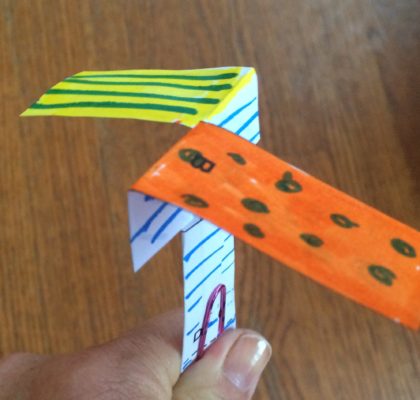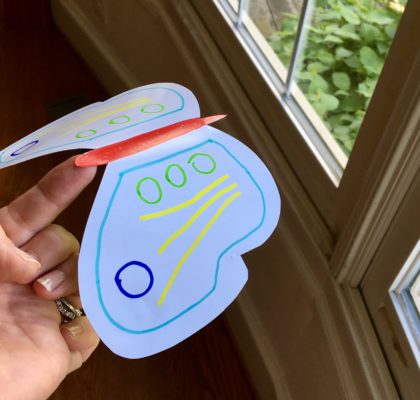 Add to Favorites
Add to Favorites
Make a Levitating Object in a Jar
In this science activity, kids will make a levitating object in a jar while while exploring magnetic forces.
A magnet is something that exerts a force (a push or pull) on magnetic materials. Magnets can be man-made or naturally occurring. Some examples of man-made magnets include bar and horseshoe magnets. Magnetite is an example of a naturally occurring magnet; it is found in a rock called “lodestone.” Examples of materials that are drawn to magnets include iron, nickel, steel and, of course, other magnets. Note: not all metals are drawn to magnets.
Magnetic force is produced by the atoms (the smallest unit of matter) in a magnet. Normally, atoms that are next to each other spin randomly in different directions. However in magnets, the atoms that are close to each other spin in the same direction. This creates a magnetic field which exerts force on certain metals and other magnets. The more atoms that are spinning in the same direction, the stronger the magnetic force will be. This force can be exhibited as a push (repulsion) or pull (attraction).
All magnets have two poles: north and south. They are named that way because a magnet’s north pole is attracted to the Earth’s north pole, and a magnet’s south pole is attracted to the Earth’s south pole. A magnet’s strongest force comes from its poles. Similar poles on a magnet will repel each other (north to north or south to south), while opposite poles will attract each other (north to south). If you were to cut a magnet into smaller and smaller pieces, it would still have the same two poles. There is no such thing as a magnet with one pole, or two of the same poles.
Materials
- Recycled glass jar with metal lid - 1 per student
- Strong magnet - 1 per student
- Lightweight metal object
- Thread, fishing line or similar. The thinner the thread is, the better the illusion that the object is floating. (Note: we used a highly visible string in our demonstration so that the string placement would be obvious.)
- Invisible tape
Instructions
Attach the magnet to the inside top of the metal lid, making sure that the magnet cannot be seen. (A 1/2" button magnet works, as does a smaller neodymium magnet, which is much stronger.) The magnet should stick all by itself to the metal lid.
Hold your thread up against the side of the jar and measure off a piece that is about ¾ the height of the jar, plus a few more inches for tying and attaching. You don't have to use an invisible thread or fishing line, but it does contribute to the optical illusion.
Tie your metal object to one end of your thread. This object can be anything from a paperclip to a pipe-cleaner bent into a decorative shape to a washer – be creative! Just make sure it's not too heavy, and that it will be attracted to a magnet.
Using invisible tape, attach the other end of the thread to the inside bottom of the jar and drop the thread and object into the jar.
Screw on the lid with the magnet. Now flip the jar upside down until the metal object is grabbed by the magnetic force of the magnet. If the object can touch the magnet, your thread is too long. If the object cannot get close enough to the magnet to be attracted, your thread is too short. Once you’ve made any required adjustments, you should be able to turn the jar right-side up again and have the object appear to be floating in nothing but air!
For preschool students, you'll need to do most of the assembly for the kids, but they will enjoy decorating and playing with the toy, and seeing how the magnet works.
Extensions:
Design your levitating object to match a theme, such as a bent red pipecleaner heart for Valentine’s Day, or a clover taped to a paperclip for St. Patrick’s Day.
For a gift, consider taping a meaningful 2-sided picture to a paperclip.
Don’t forget to decorate the lid!










